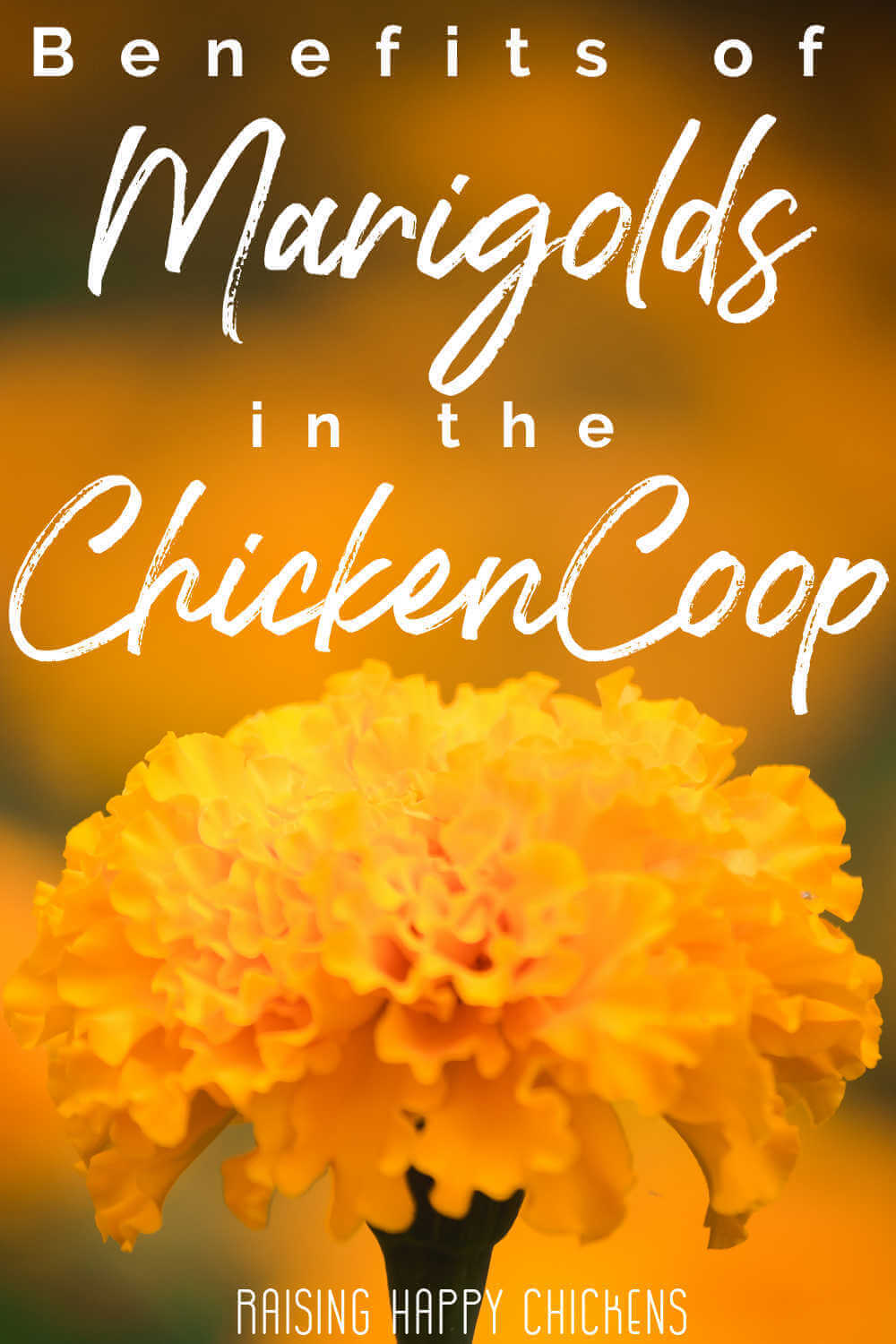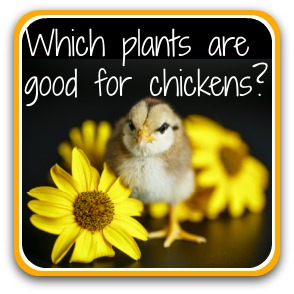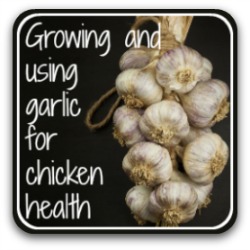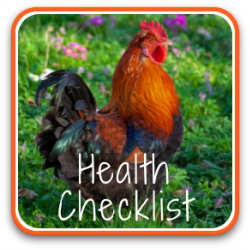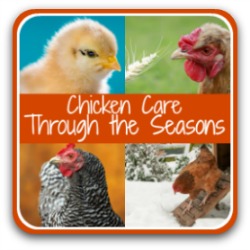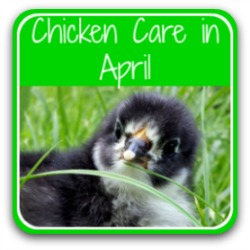- Home
- Plants for Chickens
- Marigolds
Marigolds and your chickens.
Have you always wanted extra-extra golden egg yolks from your hens?
How would it be if you could combine that with a completely natural way of keeping chickens healthy?
Many commercial chicken feeds contain some form of chemical supplement to boost the immune system.
And both commercially farmed and some backyard flocks are systematically given antibiotics to guard against disease.
There are two issues with this: chickens should never be kept in conditions where they need antibiotics as a matter of course. Basic good husbandry should be enough to ensure disease is uncommon.
And secondly, the use of some natural substances is a far better option to help boost the chicken's immune system before drugs become necessary.
It's not difficult to protect your chickens naturally, without recourse to commercially produced additives. Because one of the most common and easiest to grow of all garden flowers blends both those qualities – and more.
The humble marigold.

Here's a short video summary of the best plants for your chickens.

This is a long, detailed article. If you want to access a particular piece of information quickly, use these links.
Or carry on scrolling for all the information you need.
Types of marigold.
There are several different types of plant which carry the "umbrella" name of marigold, but are different both in looks and in the jobs they do.
Proper research (see my sources section) shows that not all of them have the properties we're looking for to keep our chickens healthy.
It's important to understand the differences. Otherwise, you'll give your chickens the wrong type of genus and wonder why you're not getting the results you were aiming for.
The dwarf version of each of these plants has the same qualities as the standard.
Top Tip: When shopping for marigolds, search by the botanical (Latin) name, not the common English names which are sometimes confused.

If you purchase a product through links on the rest of this page, I receive a small commission at no extra cost to you. I only recommend products I have purchased or would purchase myself and which I believe would benefit you. To learn more please see my disclosure policy.
What do marigolds look like? The calendula family.
The common, or "pot" marigold: calendula officinalis.
Often known by its Latin name, calendula, as well as marigold, this is an easy one to distinguish with its brightly coloured orange or yellow flower head and its daisy-like petal formation.
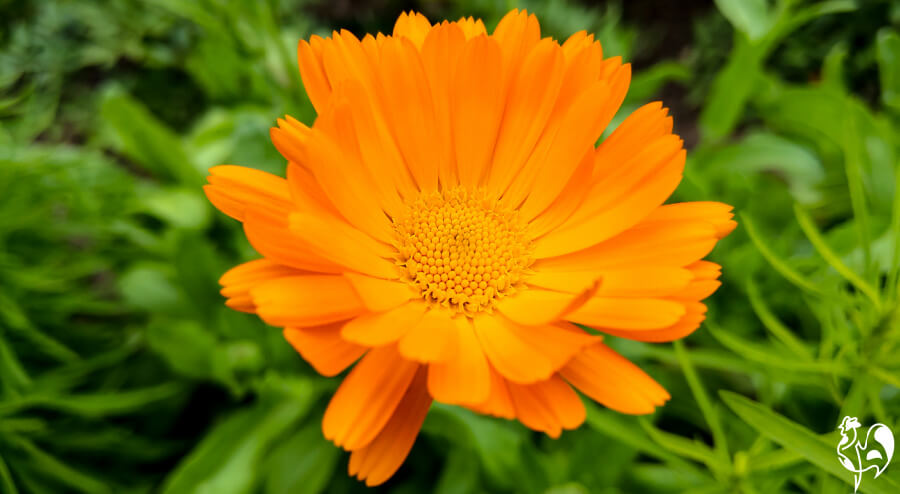 The daisy like flower of the common or pot marigold, "Calendula Officinalis".
The daisy like flower of the common or pot marigold, "Calendula Officinalis".The calendula is a perennial plant but can't survive hard winters, so in many colder areas it's thought of as an annual which needs replacing each year.
The calendula has anti-bacterial properties and is best used in eco-friendly cleaning washes for the coop.
Calendula seeds are generally available in the spring.

The tagetes family.
The French marigold: tagetes patula.
This is the variety seen most often in gardens and hanging baskets. It comes in various colours, the most popular being a deep orange and bright yellow.
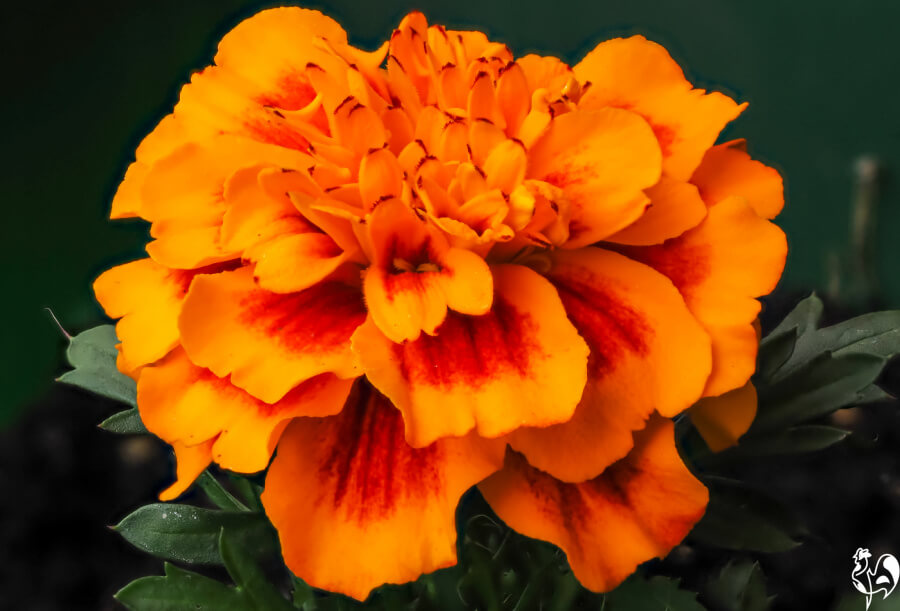 The French marigold flower.
The French marigold flower.An annual plant, it tends to spread rather than grow upright and blooms from summer up till first frosts. It's fine with rainy conditions too, so not as good for very dry climates. Water often!
This is the plant you want if your aim is to make your hens' eggs a darker shade of orange, and add to their nutritional value.
Tagetes seeds are available here but will sell out quickly each spring.
The African, also known as Mexican, marigold: tagetes erecta.
With a flower head like a pom-pom, the African marigold, sometimes known as the Mexican, can grow up to 90 cm (35") tall. Its height makes it a favourite of florists for adding elevation to displays.
It survives well in drought, too, so if you often forget to water your plants this is a good choice!
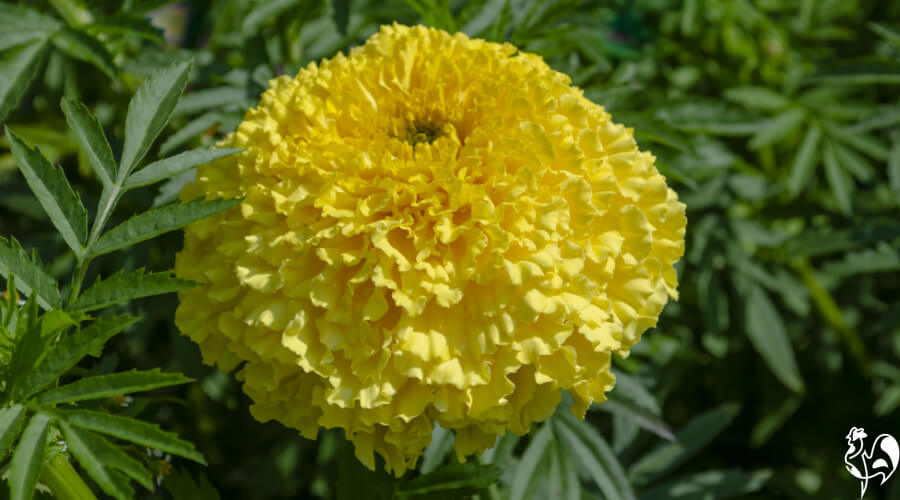 The head of an African (also known as Mexican) marigold, tagetes erecta.
The head of an African (also known as Mexican) marigold, tagetes erecta.This is perhaps the most amazing of the family. It's a rich source of carotenoids which are known to have antioxidant effects, improving general health and helping strengthen the immune system.
Seeds are available in the spring only.

Marigold benefits for chickens: an alternative to chemicals.
Antioxidants to improve cell growth and boost the immune system.
Please note: this section is not a substitute for veterinary advice. If you are worried about your chickens' health, or if they already have an illness or disease, marigolds are not the way to go – seek veterinary advice as soon as possible.
Through scientific research, we know that marigolds contain high levels of flavonoids and the carotenoids lutein and lycopene.
Each of these is a powerful antioxidant.
Antioxidants are an important factor in keeping any living creature healthy. They prevent normal cells being destroyed by "free radicals" which, left to their own devices, break the healthy cells down, leading to illness and disease.
There have been a substantial number of studies(e.g. 1, 2) showing that using both marigolds and marigold extract in the poultry diet increases the chicken's antioxidant capacity and helps repair skin tissue.
In other words, marigolds help chickens ward off disease.
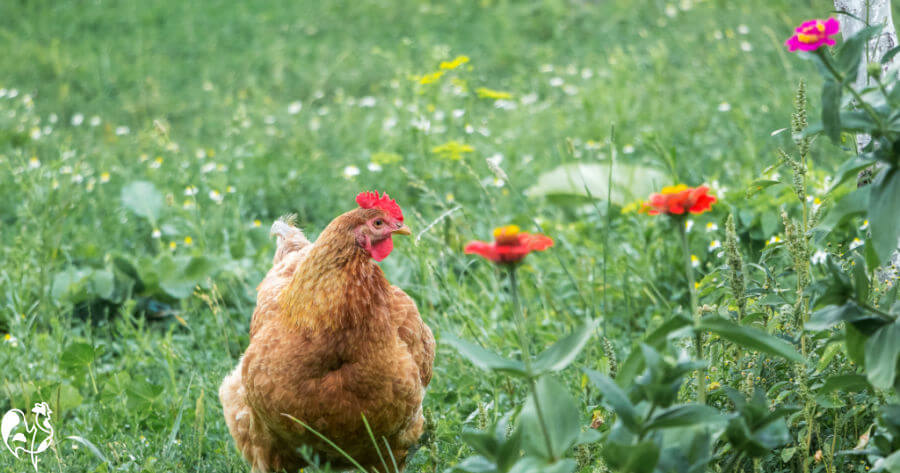
Which type of marigold?
The best marigold for this is the African / Mexican, tagetes erecta.
Don't use essential oils here. The extract used in scientific studies is specially prepared, extracting the carotenoids directly from the flowers and having a specific lutein content(2).
Use fresh marigold flowers – growing them yourself is easy and fun! For information about how to prepare the flowers, see here.

Benefits of marigolds for chicken eggs.
Carotenoids and cholesterol.
As well as helping a chicken's health, the carotenoids present in marigolds also affect egg quality – in a good way.
Because eggs laid by hens fed on marigolds or marigold extract were proven to have a reduced level of cholesterol(2, 3).
In fact, the cholesterol level was found to have decreased by a massive 29.98%(2).
So there are benefits not only for chickens and their eggs, but for us, too.
Want to know more about eggs and cholesterol? Here's my article.
Which type of marigold?
Again, tagetes erecta (the African or Mexican marigold) was found to have the highest level of carotenoids, so if your main aim is to reduce cholesterol in your eggs, this would be the family to go for.
Marigolds and egg yolk colour.
Most people these days prefer a rich, dark coloured yolk in their egg. To deal with this market demand, many egg producers add synthetic pigments to their hens' feed.
But there are questions over the safety of those pigments(5).
And there's no need to use them. Add marigold flowers instead for natural enhancement of yolk colour.
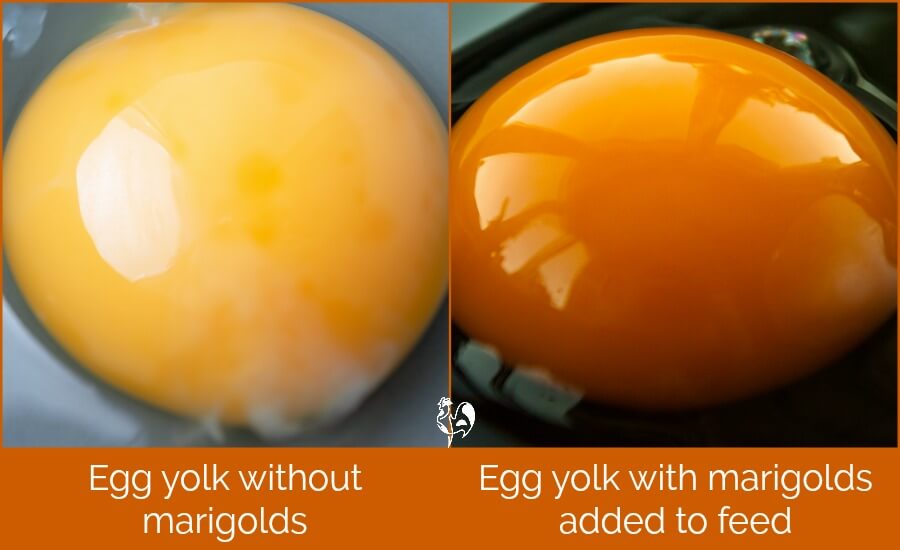
Which type of marigold?
Any of the tagetes varieties will help with this. However, the French marigold (tagetes patula) is known to show particularly good effects(4).

How to add marigolds to your chickens' diet.
Chickens are particularly attracted to red, orange and yellow colours so persuading them to eat marigolds isn't difficult. Except, of course, that chickens can be picky.
- Make sure that you only feed flowers which have been grown organically. The last thing you want to do is add insecticides to your flock's food.
- You can try feeding them fresh, but I've found that dried works better.
- Dry the petals by cutting the marigolds close to the ground, tying several stems together and hanging upside down in a warm, dry room for about three weeks.
- Add about ten grammes (just less than half an ounce) of petals to a kilo (2 lbs) of their ordinary feed.
Don't worry too much about the amount, though. Studies have shown no adverse effects even when the addition of marigolds or marigold extract was high(1).

Uses of marigolds in the chicken coop.
Marigolds as pest control: a proven repellent.
Is using marigolds to keep mosquitoes and other bugs at bay based in fact or myth?
It's a scientifically proven fact(4) – if you have the right kind of marigold. The correct plant to use here is the tagetes patula variety: the French marigold.
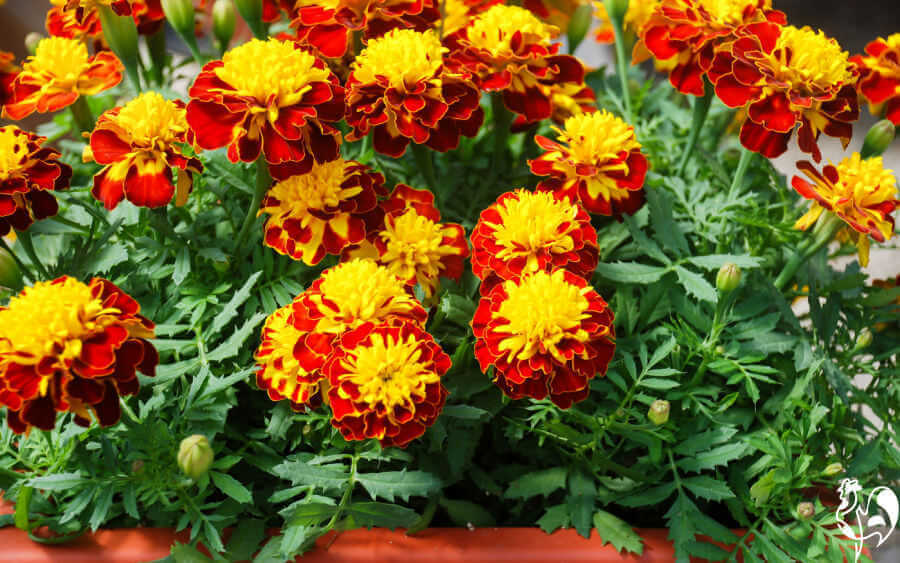 The distinctive French Marigold – best as a bug deterrent and easily grown in pots.
The distinctive French Marigold – best as a bug deterrent and easily grown in pots.This genus of marigold plant contains pyrethrum, a chemical it gives off during its normal growing cycle. Pyrethrum is toxic to many insects – if you look at the make-up of most insecticides, you'll find it as one of the ingredients.
So it's one of the best holistic insect repellents, as well as its radiant flowers attracting butterflies and bees who love to pollinate it. The best of both worlds – and much better to try a marigold repellent than chemical compounds.
How?
Plants work best, but because chickens love them too it's best to use a raised planter or hanging basket outside your coop door.
Make sure the marigold you buy is a scented variety.
Common marigold (calendula): benefits as a cleaning agent for coops.
The flowers of the common or pot marigold (calendula officinalis – not the tagetes genus) is proven to have anti-bacterial properties, effective against fungi and bacteria(5).
So it makes sense to use them as an eco-friendly anti-bacterial wash in your coop. It will not get rid of an established infestation of lice or mites, for example, but using it to clean the coop as a normal part of weekly husbandry will help control outbreaks from happening in the first place.
To make a calendula wash...
A wash for walls.
- Steep two tablespoons of fresh pot marigold (calendula) petals in two cups of water.
- Bring to the boil.
- Allow to sit for at least ten minutes.
- Strain and use.
An oil based mix for surfaces.
- Either dry your own or buy already dried calendula petals. Put them in a glass container to the top.
- Cover with a good quality oil – olive or almond work best.
- Cover the container and leave to stand somewhere cool for about four weeks.
- Strain the petals from the oil.
- Add a few drops of lavender oil, if you have it, and refrigerate the oil until you use it.
- Rub it on roosts, nest boxes and anywhere else your chickens sit.
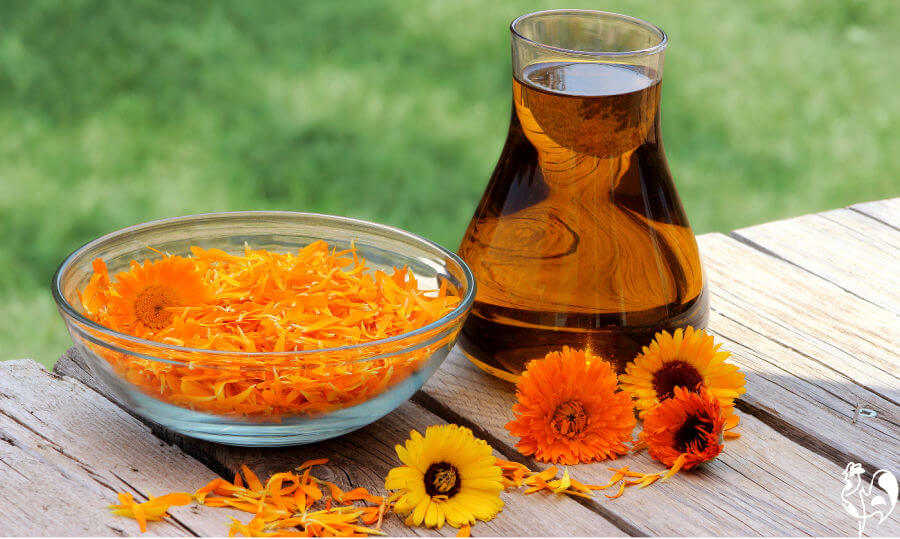 An oil based calendula rub – a good anti-bacterial cleaner for coops.
An oil based calendula rub – a good anti-bacterial cleaner for coops.Marigolds in nest boxes.
Again, it's the common marigold, calendula officinalis, which has anti-bacterial properties. But is it of any use in nest boxes?
I've seen claims around the internet that marigold petals scattered in nest boxes work all kinds of miracles, from clearing respiratory diseases to getting rid of tumours.
Those claims are unfounded. As we've seen, for marigolds to have any medicinal effect, they need to be ingested.
Does it hurt to scatter marigold petals in your nest boxes? Of course not! The hens may eat them, which is a benefit, and they'll look pretty.
If you don't want to go to the trouble of drying them yourself, dried calendula flowers are easily obtainable online.

How to grow your own marigolds.
Where to buy marigolds.
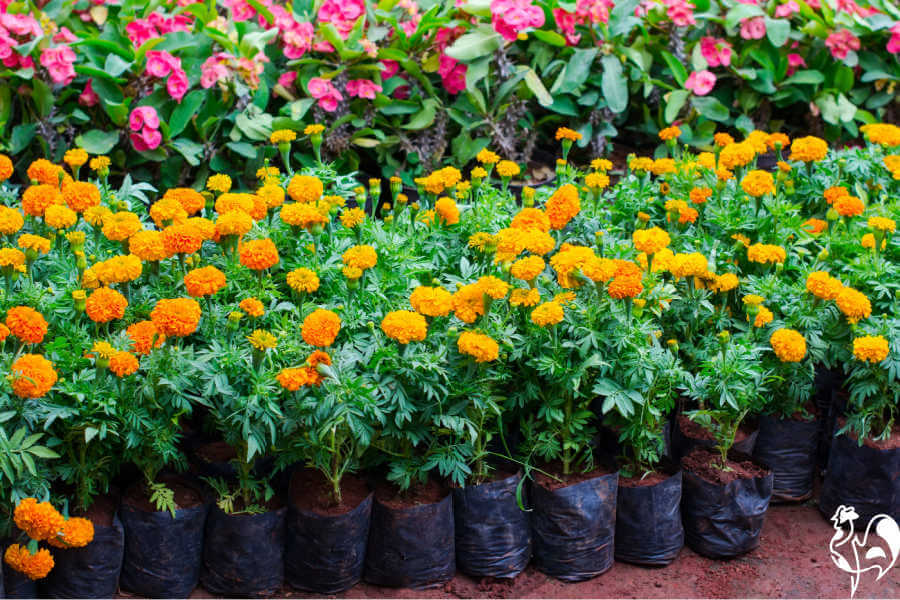 Buy them if you like – but growing marigolds is more fun!
Buy them if you like – but growing marigolds is more fun!Of course, you can buy marigolds at any garden centre but they're so much less expensive to grow your own – and more fun.
And remember that not all bought plants have been grown organically. Be sure they have been raised without insecticide spray.
All types of marigold are so easy to grow in virtually all types of soil that they make a great project for kids. And their strong colours make them a favourite to brighten any display, whether in the veg patch, the border or in pots.
When to plant marigolds.
Sow the seeds as soon as frosts have passed. The African marigold is slower to mature than others, so start with that variety, or buy young plants rather than seeds.
How to plant marigold seeds.
They do prefer full sun, so bear that in mind when you're planting out.
- If planting seeds directly into soil, make sure it's cleared of weeds and stones.
- Sow the seeds about 12 mm (0.5") deep.
- Water and leave!
- As the plants grow, thin to about 30 cm (12") apart.
- If sowing into seed trays, a general purpose compost is fine. Use one seed per cell.
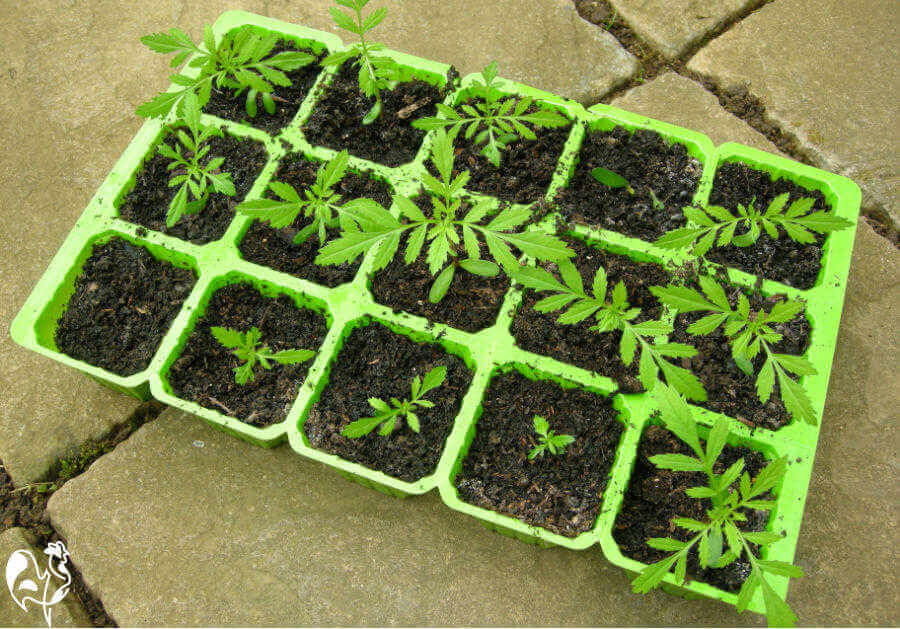
How often to water marigolds.
- As they grow, water from the base of the plant, not the top.
- Allow the soil to dry out slightly before watering.
How to deadhead marigold plants.
- Remove dead flowers to be sure of your plants growing right through the summer and well into autumn.
- If you see a flowerhead looking diseased, prune the plant back to the next healthy looking set of leaves.
- If you intend to grow in the chicken run, put them in pots or hanging baskets, otherwise you'll end up with just stalks as the chickens will strip the flowers bare!
- If you intend to eat the flowers yourself – they're very good in salads – use the calendula variety, not tagetes which can cause irritation to the skin.

Don't forget: marigolds attract bees!
Remember: as well as marigolds being good for your chickens, your eggs and your coop, they're also a great addition to the garden to attract honey bees and butterflies.
Win-win!
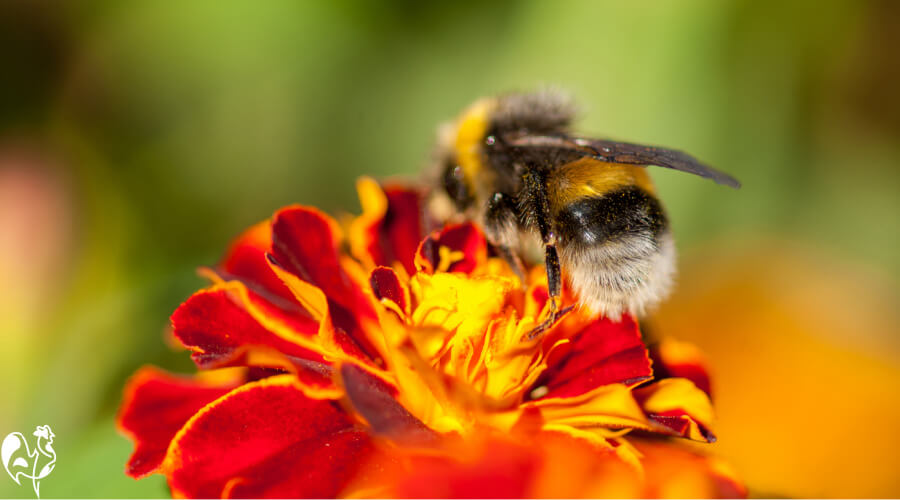

If you enjoyed this article, you may also like these.

Sources.
1. Wang, S., et al: Effects of dietary marigold extract supplementation on growth performance, pigmentation, antioxidant capacity and meat quality in broiler chickens. Pub. Journal of Animal Science, 2017.
2. Nuraini, M., and Djulardi, A.: Marigold flower extract as a feed additive in the poultry diet. Pub. International Journal of Poultry Science, 2017.
3. Baker, R., and Gunther, C.: the role of carotenoids in consumer choice and the likely benefits from their inclusion into products for human consumption. Pub. Journal of Trends in Food Science and Technology, 2004.
4. Lokaewmanee, K. et al: Enhancement of yolk color in raw and boiled egg yolk with lutein from marigold flower meal and marigold flower extract. Pub.
5. Liu, G., et al: Skin pigmentation evaluation in broilers fed different levels of natural okra and synthetic pigments. Pub. Journal of Poultry Research, 2008.
6. Moore, S. J. and Maia, M. F: Plant based insect repellents: a review of their efficacy, development and testing. Pub. Malaria Journal, 2011.
7. Efstratiou, E et al: Anitmicrobial activity of calendula officinalis petal extracts against fungi. Pub. Jpournal of Complementary Therapy, 2012.
8. Bloom, J: free Range Chicken Gardens. Pub. Timber Press, 2012.
- Home
- Plants for Chickens
- Marigolds
